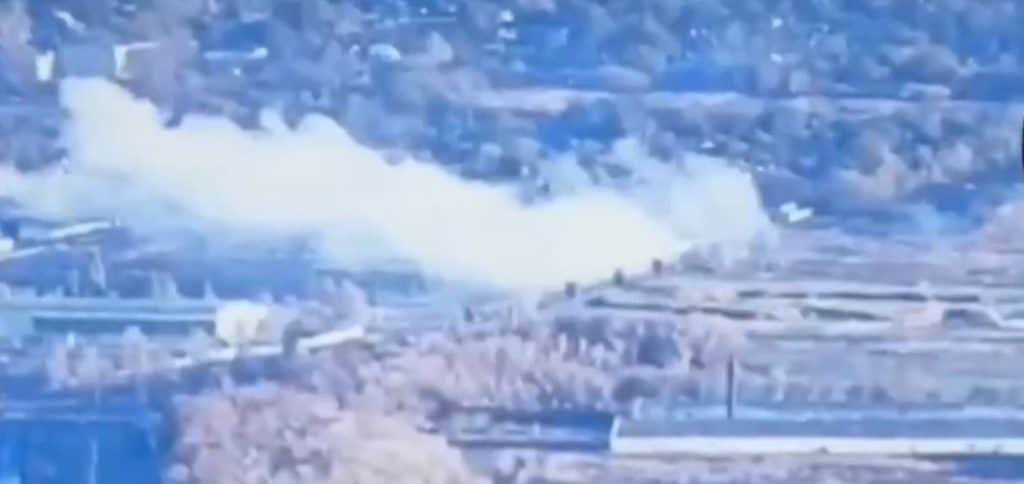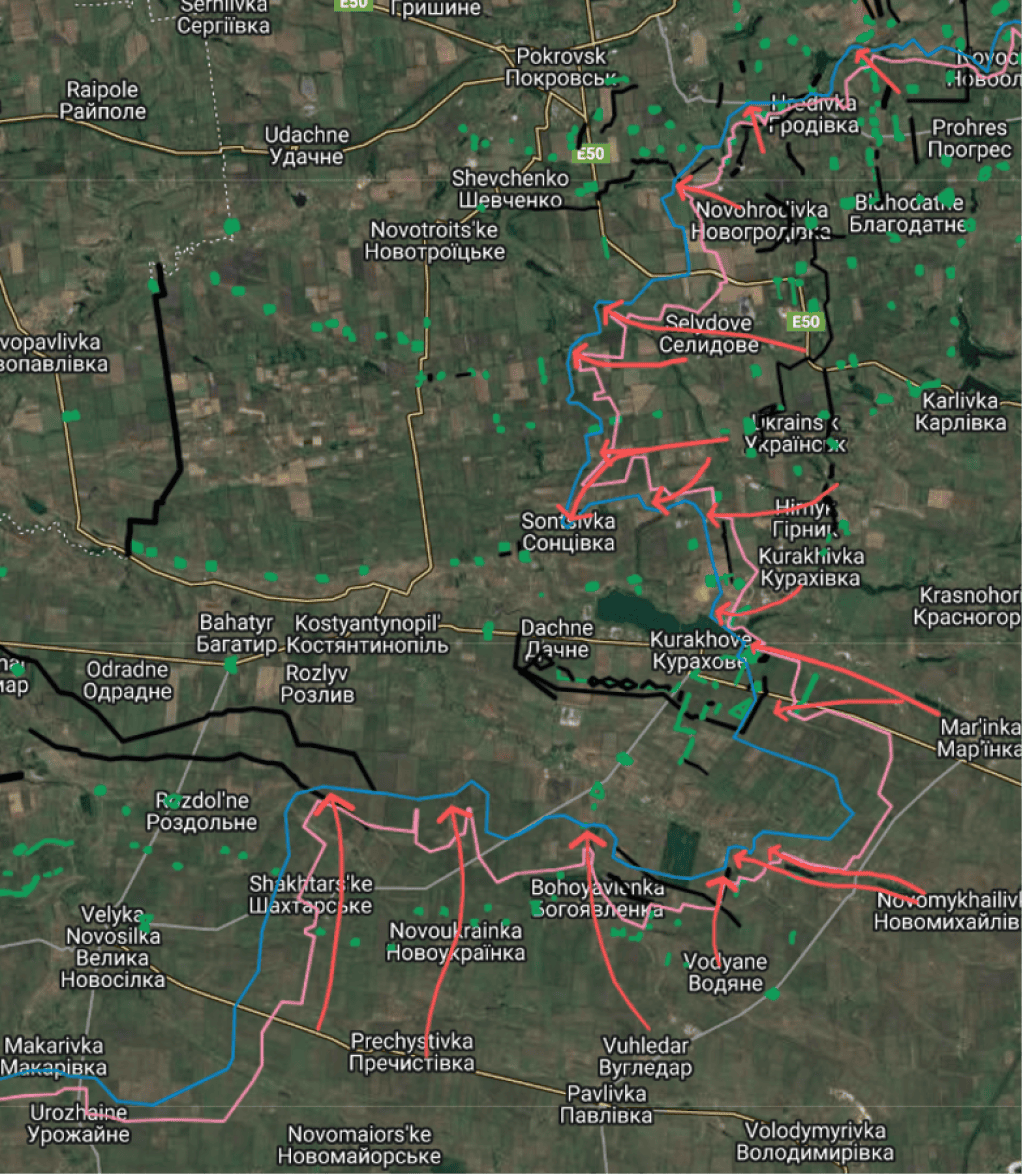
Russian forces are currently attempting to encircle Kurakhove, a small city in the southern part of Donetsk Oblast in eastern Ukraine. Their rate of advance, while still relatively modest, has accelerated in recent weeks, reflecting Ukraine’s shortage of manpower and reserves.
Over the summer, Russia concentrated on pushing toward the city of Pokrovsk, an important logistics hub in the western part of Donetsk Oblast. Russian forces took the nearby town of Novohrodivka in August and are currently less than 7 kilometers from Pokrovsk. Ukraine rushed in reinforcements to try to stall Russia’s advance. They included forces from various National Guard units and the 93rd Mechanized Brigade, pulled from other areas.
In the months since the initial Pokrovsk offensive, Moscow has shifted its focus to the southern part of Donetsk Oblast. Russian forces have made steady gains toward Kurakhove from the north. In recent weeks, they captured the towns of Hirnyk and Kurakhivka, along with some nearby settlements, gaining high ground advantageous for Russian artillery and drone crews targeting Ukrainian forces in and around Kurakhove. Hirnyk and Kurakhivka fell relatively quickly, suggesting Ukrainian troops may have withdrawn due to a risk of encirclement inside a pocket that Russia had formed around the towns.
In late October, Russia also captured the small city of Selydove. This advance could facilitate a renewed push toward Pokrovsk sometime down the line. The Russians could also continue pushing westward from Selydove.
East of Kurakhove, Russia has inched its way to the city’s outskirts. Whereas Russian forces north of Kurakhove and near Pokrovsk have relied primarily on small-unit actions with few or no armored vehicles, Russia has been conducting slightly larger-scale attacks east of Kurakhove, at times using one or two companies worth of vehicles. These attacks have resulted in significant Russian losses, including a brigade commander. Russia will likely seek to maintain pressure here to fix Ukrainian forces.
The Russians are also advancing south and southwest of Kurakhove. In early autumn, Russia took Vuhledar, a small city often called a “fortress” because it is located on high ground and contains numerous high-rise buildings that offer advantageous defensive positions. The city fell, mainly because Ukraine lacked sufficient manpower and reserves to replace losses and reinforce the 72nd Mechanized Brigade, exhausted after two years of defending Vuhledar without rotation. Ukraine attempted to plug the gap using poorly manned, trained, and equipped territorial defense forces pulled from another area, but to no avail. Elements of the 72nd Brigade reportedly rotated out after the city fell.
In late October, Russia suddenly began advancing northwest of Vuhledar in columns of tanks and other armored vehicles. Ukrainian sources estimate that these attacks involved a total of 40 to 50 vehicles over multiple days. Russia has taken a handful of villages in that area, advancing around 11 kilometers at the deepest point. Thus, the Russians breached Ukraine’s line of prepared strongpoints between Vuhledar and Kurakhove.

At present, Russian forces are attempting to reach the village of Uspenivka, southwest of Kurakhove. Achieving this aim would block the main supply route for Ukrainian troops defending the villages of Antonivka and Yelyzavetivka to the southeast. Taking this area would, in turn, enable Russia to attack Kurakhove from the south.
More ambitiously, Russia likely hopes to encircle Kurakhove by severing the N15 highway into the city. This would spare Russia a costly battle for Kurakhove, whose multistory buildings and large factories would provide Ukrainian troops with formidable defensive positions. Taking villages west and southwest of Kurakhove could also cut a supply line into Velyka Novosilka to the southwest, putting Russia in a good position for a potential effort to take that city.
Russian forces south of Kurakhove are currently around 10 kilometers from N15. To the north, Russian troops are attempting to take Sontsivka, whose capture would put them roughly 6 kilometers from the highway.
Complicating matters for Russia, its offensive toward Kurakhove encompasses three different army groups. The “Tsentr” group is responsible for the area north of Kurakhove; part of the “Yug” group is operating east and southeast of the city; and the “Vostok” group is fighting to the southeast. This arrangement, which likely resulted more by coincidence than design, may impede coordination.
For Kyiv, the chief challenge is a shortage of manpower. Many units are desperately short on infantry, and Ukraine’s mobilization rate has reportedly fallen after initially surging following the introduction of a new mobilization law back in the spring.
Meanwhile, Kyiv’s operation in Russia’s Kursk region has tied up Ukrainian units that could otherwise be used to plug gaps in Donetsk Oblast. Recent Ukrainian redeployments of marine, assault, and drone units from other areas to the Pokrovsk and Kurakhove directions may have helped to a degree. Still, Ukraine has proven unable to stabilize the situation so far.
Notably, Ukraine lacks strong prepared defensive lines in the area behind Kurakhove and Pokrovsk. The fortifications it has built there are oriented toward countering an advance from the south, not the east. If Kurakhove falls and Moscow retains sufficient manpower and resources to continue offensive operations, Ukraine may have an even harder time slowing Russia’s advance.







